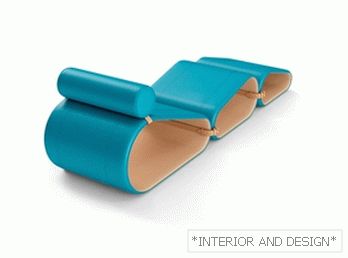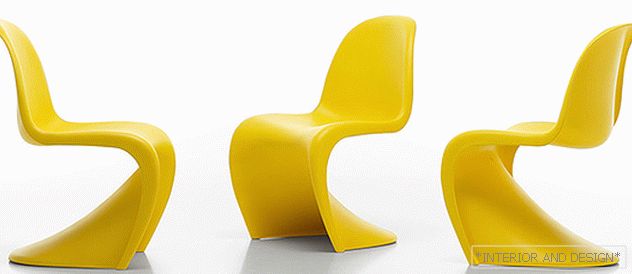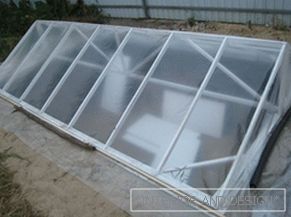 Today, almost every owner of the backyard has a greenhouse on its territory. Often, you just can not do without it if you need to grow early vegetables or greens. Greenhouses can be used for seedlings, with their help it is easy to get an excellent harvest of vegetable crops.
Today, almost every owner of the backyard has a greenhouse on its territory. Often, you just can not do without it if you need to grow early vegetables or greens. Greenhouses can be used for seedlings, with their help it is easy to get an excellent harvest of vegetable crops.
Many people far from agriculture do not see the difference between a greenhouse and a greenhouse. But in fact, these are completely different structures.
Called greenhouse small-sized structure, which is necessary for the protection of thermophilic plants from adverse climatic conditions. It is much smaller than the greenhouse and does not have heating. Unlike the greenhouse, where plants can be grown year-round, greenhouses are used only in the warm season. The greenhouse consists of a side fence and a transparent roof, which, if necessary, can be removed.
Content
- 1 What is the greenhouse used for?
- 2 Greenhouse device
- 3 Where to install a greenhouse
- 4 Pros and cons of greenhouses
- 5 What are greenhouses
- 6 How to make a greenhouse yourself
What is the greenhouse used for?
In private plots greenhouses are used very often. Greenhouse can be used for the following goals:
- growing seedlings of vegetable crops: tomatoes, cucumbers, cabbage and others;
- growing ornamental plants and flowers;
- rearing of potted plants;
- rooting cuttings before planting them into the ground;
- protection of seedlings from frost on the soil;
- cultivation of early vegetable crops: lettuce, radish, green onions.
Usually, greenhouses are used in early spring or autumn, when it is necessary to protect plants from sudden changes in temperature, which can be harmful for them. In a closed greenhouse space are created optimal conditions for plants. Greenhouses, covered with foil, perfectly protect seedlings from morning frosts to -3 ° C.
Greenhouse device
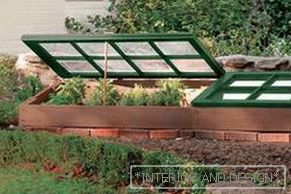 A greenhouse is enough simple construction Unlike polycarbonate greenhouses, the height of which allows a person to walk there in full growth, the height of a greenhouse can be much smaller. Usually the size of this building is due to the height of the plants it grows. The main elements of the structure of the greenhouse are: frame, side fence and roof.
A greenhouse is enough simple construction Unlike polycarbonate greenhouses, the height of which allows a person to walk there in full growth, the height of a greenhouse can be much smaller. Usually the size of this building is due to the height of the plants it grows. The main elements of the structure of the greenhouse are: frame, side fence and roof.
As frame могут быть использованы различные материалы. Byдойдут деревянные планки, металлические трубы, любой металлический профиль. Самые простейшие конструкции парников называются тоннельными пленочными укрытиями. Каркас для них можно изготовить из обычной толстой проволоки-катанки, согнув ее в виде дуг. В этой конструкции прозрачная полиэтиленовая пленка крепится прямо на каркас без оборудования боковых стенок.
Side walls парников могут быть как непрозрачными, так и пропускающими свет. Они могут быть сделаны из досок, пластика, металлических листов и даже из стекла. Кровля обычно изготавливается из полиэтиленовой пленки. Это самый простой, легкий и бюджетный вариант парника. Он может защитить рассаду от небольших заморозков весной. Если же в качестве кровли применяется стекло или поликарбонат, такое сооружение может сохранить растения от любых заморозков на почве или резких похолоданий. Однако эта конструкция значительно тяжелее пленочной, она требует установки более мощного frame.
Some types of greenhouses are equipped with a primitive heating system. A cold, unheated greenhouse collects the sun's heat during the day and keeps it at night. The temperature in it is not very stable, it is impossible to plant seedlings very early in it. Biofuel greenhouses allow growing vegetables and seedlings from the beginning of March, when there is still snow. Biofuel is laid in special pits, located under the greenhouse, and in the process of decay, it releases heat. The temperature in such greenhouses can even reach 15–18 ° C even in cold weather.
Where to install a greenhouse
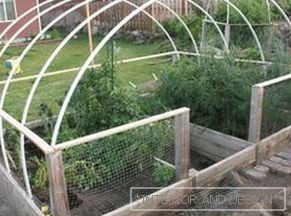 It is important to choose the right greenhouse space. This should be a sunny, unshadowed area, as protected from the wind as possible. Greenhouses are usually located in length from east to west. This orientation ensures maximum illumination. Also with this arrangement, the shadow cast by the frame will be minimal.
It is important to choose the right greenhouse space. This should be a sunny, unshadowed area, as protected from the wind as possible. Greenhouses are usually located in length from east to west. This orientation ensures maximum illumination. Also with this arrangement, the shadow cast by the frame will be minimal.
When installing a greenhouse, you need to consider illumination in the summer and spring and autumn. In summer, the sun is much higher than in the offseason, so the shadows cast by trees and buildings can shade the greenhouse in the spring and autumn.
It is desirable that the greenhouse was near from the beds, which will be subsequently planted seedlings. This will reduce the time for the transfer of plants from the greenhouse to the beds, will speed up and simplify the work.
Если парник имеет прямую the roof, ее лучше располагать с наклоном к югу. Южную боковину нужно сделать примерно в 2 раза ниже, чем северную. Так постройка будет улавливать максимум света.
The strengths and weaknesses of greenhouses
Byпулярность парников на приусадебных участках обусловлена их многочисленными merits. These include ease of use. In regions with a harsh climate, greenhouses are used from the beginning of March to the end of November; in mild climates and the absence of winter frosts, a greenhouse can operate all year round.
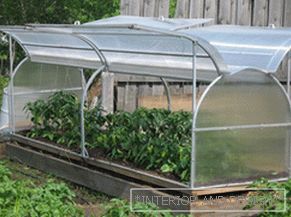 В отличие от теплицы, парник установить гораздо проще. Тем более, что для его постройки в дачных условиях часто используются те материалы, которые есть под рукой. By той же причине парники отличаются достаточно низкими ценами. Самой бюджетной является тоннельная film a construction for the construction of which practically does not require other materials, except for polyethylene film. Greenhouses with glass and polycarbonate roofing are more durable, but cost more.
В отличие от теплицы, парник установить гораздо проще. Тем более, что для его постройки в дачных условиях часто используются те материалы, которые есть под рукой. By той же причине парники отличаются достаточно низкими ценами. Самой бюджетной является тоннельная film a construction for the construction of which practically does not require other materials, except for polyethylene film. Greenhouses with glass and polycarbonate roofing are more durable, but cost more.
There are greenhouses and their limitations. So, in small greenhouses with sufficiently warm sunny weather, plants can burn. To prevent their death, need to be ventilated парник или периодически полностью открывать его. Также нужно учитывать светопропускную способность of the material кровли. Если через стекло проходит достаточно света, то пленка или поликарбонат задерживает некоторую его часть. Byэтому при неправильно выбранном месте расположения в затененном парнике растениям может не хватить света для роста.
What are greenhouses
Парники бывают различных видов и конструкций, в зависимости от способа установки, уровня заглубления в грунт и of the material.
By method of installation distinguish between portable and stationary greenhouses. Portable greenhouse can easily be moved to another place. Usually, with the arrival of heat and sunny weather, it is rearranged to where there is more shade and coolness, in the spring and in the autumn it is transferred to a more illuminated area. Stationary greenhouses set in a permanent place.
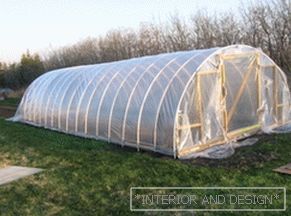 By depth level в грунт различают наземные и углубленные парники. Наземные конструкции устанавливают на поверхности земли. Это так называемые дачные парники, которые покрывают пленкой. Для сохранения тепла края пленки можно присыпать землей. Углубленные лучше держат тепло, их размещают в котлованах. Обычно наземные парники являются холодными, а углубленные можно сделать с обогревом биотопливом. As биотоплива используется смесь прелой листвы и соломы, в которую добавляют конский навоз для лучшего гниения и быстрого разогрева. Ее помещают в котлован под парником.
By depth level в грунт различают наземные и углубленные парники. Наземные конструкции устанавливают на поверхности земли. Это так называемые дачные парники, которые покрывают пленкой. Для сохранения тепла края пленки можно присыпать землей. Углубленные лучше держат тепло, их размещают в котлованах. Обычно наземные парники являются холодными, а углубленные можно сделать с обогревом биотопливом. As биотоплива используется смесь прелой листвы и соломы, в которую добавляют конский навоз для лучшего гниения и быстрого разогрева. Ее помещают в котлован под парником.
Depending on the of the material roofs they are:
- film;
- glass;
- made from polycarbonate.
The simplest and cheapest are film greenhouses. Polycarbonate and glass versions require a more powerful design, they are more expensive, their service life is longer.
How to make a greenhouse yourself
For the suburban area is better to make simple tunnel greenhouse covered with plastic wrap. Its dimensions can be up to 3 × 1.2 m.
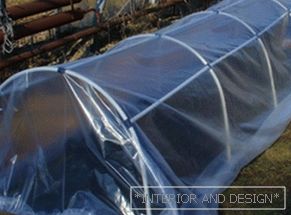 In order to make a small ground greenhouse in the country, you will need the following materials:
In order to make a small ground greenhouse in the country, you will need the following materials:
- wooden boards 200 mm wide;
- fiberglass fittings or metal bar with a thickness of 0.8 cm;
- polyethylene sleeve 1.5 m wide;
- stapler, drill, screws, L-shaped corners.
Byследовательность works:
- From wooden boards going rectangular box greenhouse 3 × 1.2 m. It is best to fasten the boards to each other with screws using L-shaped corners for structural rigidity. The box must be strong so that it can be moved to the right place.
- After that in the long boards of the box are drilled openings in which arches from a metal bar or fiberglass will be inserted. Holes must go in increments of up to 50 cm, otherwise the film may sag. Into the drilled holes insert pieces of reinforcement with a length of 2 m to get the arc for fixing the film. For a greenhouse with a length of 3 m, 7 arcs are needed.
- For rigidity in the upper part of the arcs it is useful fasten 3 meter wooden rail. It can be fixed with special metal ears with the help of screws.
- Sidewalls парника затягиваются полиэтиленовой пленкой. Она заворачивается на боковую дугу и крепится с помощью степлера. Нижнюю ее часть необходимо прочно прикрепить к доскам boxа.
- Now you just have to equip the roof greenhouse. For this, a polyethylene sleeve is cut along. The result is a 3-meter-wide film. It must be well fixed to one long side of the box, which, after the greenhouse is installed, will be facing north. Also need to firmly fix the film to the top wooden rail.
- The film on the other hand is left loose. Its edge is heavy with a metal tube or wooden lath. Now it is possible to open a greenhouse for ventilation from the southern sunny side.
Byстроить парник на даче достаточно просто. Много сил и времени эта работа не потребует. Стоимость такого сооружения невелика, а постройка будет приносить tremendous benefit, provide invaluable assistance to any summer resident and gardener.

